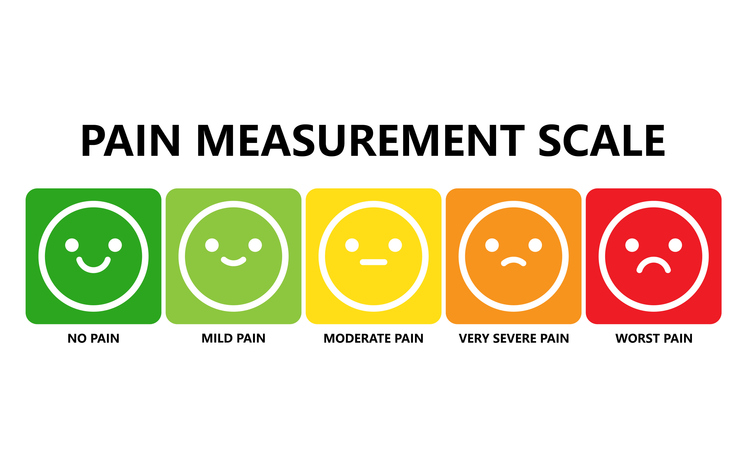Pain
The Defense and Veterans Pain Rating Scale (DVPRS)

The Defense and Veterans Pain Rating Scale, DVPRS, was created in 2010 to increase the understanding of pain intensity levels specifically among military personnel and veterans experiencing acute or chronic pain. It was also developed to improve communication and documentation during transitions in care of military personnel and veterans. While it includes a numerical scale, it also includes functional word descriptors, color coding and pictures of facial expressions to describe pain levels. Additional questions are included to gather more information about how pain affects everyday activities, such as sleep and mood.
How does the DVPR scale work?
The DVPRS consists of a basic traffic-light color code. Green represents mild pain with a scale ranging from 0-4; yellow represents moderate pain with a scale ranging from 5-6, and red represents severe pain with a scale ranging from 7-10. The DVPRS also includes an additional visual tool: facial expressions that correspond with each number. The faces range from a full happy face representing a pain level of zero to a grimacing face representing a pain level of 10.
DVPRS numerical scale and descriptors
Word descriptors are attached to each number on the DVPRS:
- 0 = No pain
- 1 = Hardly noticeable pain
- 2 = Noticeable pain, but does not interfere with activities
- 3 = Somewhat distracting pain
- 4 = Distracting pain, but does not affect normal activities
- 5 = Pain interrupts some activities
- 6 = Hard to ignore pain, avoidance of daily activities
- 7 = Pain is the main focus of attention, prevents daily activities
- 8 = Awful pain, difficult to do anything
- 9 = Unbearable pain, cannot do anything
- 10 = As bad as pain can be, nothing else matters
DVPRS additional questions
Four supplemental questions are included in the DVPRS to help identify how pain affects an individual’s lifestyle. These questions also include a numerical scale that ranges from zero to 10 for each question.
- Circle the number that describes how pain has interfered with daily activity during the past 24 hours.
- Circle the number that describes how the pain has affected mood during the past 24 hours.
- Circle the number that describes how the pain has interfered with sleep during the past 24 hours.
- Circle the number that describes how the pain has contributed to stress during the past 24 hours.
The DVPRS has proven to be a reliable, valid and all-encompassing tool for veterans and military personnel alike. While the focus of the scale is for assessing pain levels, it also measures other health factors, such as sleep, mood and stress. Although it is a fairly new pain scale, it has been widely accepted and used in U.S. Veterans Health Administration (VA) hospitals. For an example of the DVPRS, visit https://www.va.gov/PAINMANAGEMENT/docs/DVPRS_2slides_and_references.pdf.


















